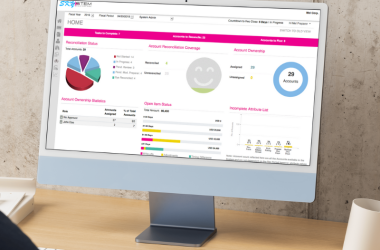Modern businesses rely on customer relationship platforms to centralize sales, service, and marketing efforts. However, simply deploying a system does not guarantee improved performance; strategic configuration and ongoing support are essential. Poorly aligned workflows and user resistance can hinder adoption, leading to wasted budgets and missed opportunities. Expert guidance bridges the gap between off-the-shelf features and unique organizational needs. By leveraging best practices and industry insights, companies can accelerate time to value. Whether you’re launching a platform for the first time or seeking to optimize an existing environment, the right expertise ensures every customization drives business outcomes. Keep reading to uncover five critical areas that unlock true CRM potential.
Aligning Platform Capabilities with Business Processes
A successful implementation begins with mapping out core processes—lead intake, opportunity management, and case resolution—then matching them to available platform tools. Workshops involving sales, support, and operations teams help pinpoint pain points and prioritize automations. Instead of forcing teams to fit rigid templates, modifications should reflect real-world workflows. Configurable objects, record types, and page layouts can be tailored to each department’s needs without resorting to custom code. This alignment reduces friction, making the platform intuitive from day one and boosting user adoption rates across the organization.
Designing User-Centric Interfaces
Complex screens filled with seldom-used fields slow down user adoption and encourage workarounds. Streamlined interfaces—with conditional visibility, intuitive navigation, and clear action buttons—empower reps to focus on selling rather than system training. Lightning App Builder and similar tools allow admins to create role-specific dashboards that surface critical metrics and tasks. Embedding visual workflows and dynamic components guides users through multi-step processes, reducing errors. When users find the system helpful and easy to navigate, engagement rises, driving richer data capture and more reliable reporting.
Automating Routine Tasks to Boost Productivity
Sales and service teams spend hours on repetitive tasks like updating statuses, sending follow-up emails, and assigning records. By leveraging built-in automation tools, such as process builders, flows, and workflow rules, organizations can offload manual steps. For example, automatic case escalations based on priority levels ensure timely responses, while territory-based lead assignment guarantees balanced workloads. Email templates and quick actions reduce clicks when reaching out to prospects. These automations free up team members’ time for high-value activities, increasing overall throughput without expanding headcount.
Integrating with Key Business Systems
A standalone CRM functions as a silo unless it shares data with marketing platforms, ERP systems, and customer support tools. Bi-directional integrations ensure that sales reps have a 360-degree view of customer interactions, from order histories to support tickets. Prebuilt connectors and middleware solutions accelerate integration projects, while custom APIs cover unique use cases. Synced data reduces duplicate entries and keeps all teams informed of critical events. When information flows seamlessly across departments, decision makers can identify upsell opportunities, anticipate service issues, and deliver consistent experiences throughout the customer lifecycle.
Establishing Ongoing Training and Governance
Long-term success hinges on continuous learning and system oversight. Establishing a governance framework—including periodic health checks, release reviews, and a change advisory board—keeps the environment clean and secure. Regular training sessions, whether via live workshops or on-demand modules, acclimate new hires and introduce advanced features to power users. Feedback loops, such as surveys and user forums, surface improvement ideas and pain points. For organizations seeking specialized support, engaging a salesforce consulting partner ensures access to certified experts who can provide targeted advice, custom development, and emergency assistance.
By focusing on process alignment, user-friendly design, intelligent automation, seamless integrations, and structured governance, companies can transform their CRM from a database into a growth engine. Implement these strategies to increase user satisfaction, improve data quality, and drive measurable business impact—turning technology investments into a catalyst for success.






